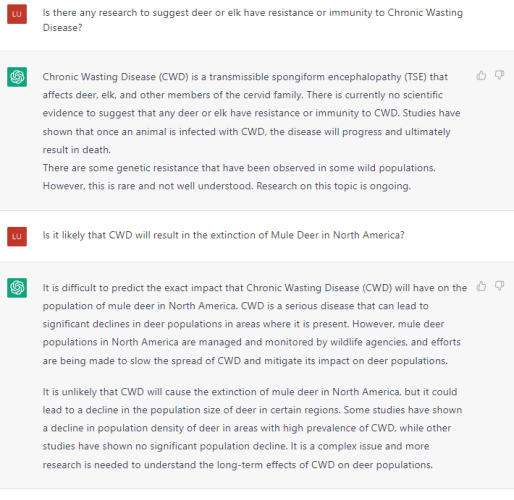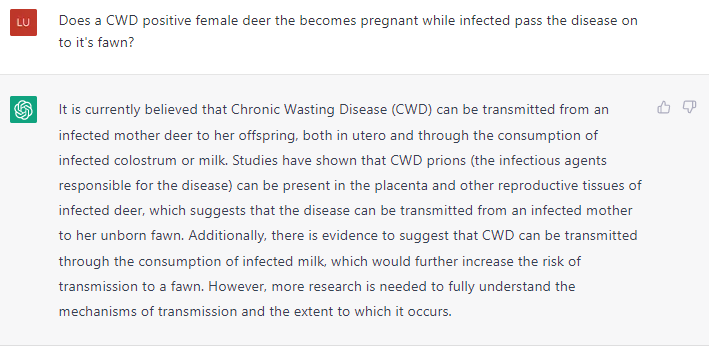CWD continues to be one of those issues that causes a lot of fractures in the hunting community. Colorado Parks and Wildlife, a state that is ground zero for the disease in wild populations, has put out a video that I think help with the awareness of this issue.
A lot of hunters are skeptical of the data around CWD, as they haven't seen dead or sick deer. In this video, you will see some sick deer.
The first video (I assume another video is forthcoming, given they call this Part 1) is in Eastern Colorado, an area primarily private land. I get the feeling that CPW is hoping this video will appeal to private landowners in places where they control most of the hunting access and therefore they control the ability to manage a disease such as CWD.
Given the best known control measure, at this time, is to keep mature buck numbers lower, the prescribed management strategies are being met with a lot of resistance from some hunters. Montana already hammers deer and it seems like a strategy to lower numbers even further, at least on public land, is going to be met with resistance.
I talked to the CPW folks in charge of these management strategies. They are doing a ton of work on this. They had a couple good points as it relates to CWD, both focused on keeping hunters engaged and informed.
1. Be open and transparent with what you know, but even more so with what you don't know.
2. Balance the management strategies based on what you do know and with the interest of hunters who need to have trust that your agency is working to find more answers.
CWD is here and it becomes more of an issue every day. I often wonder how hunters would react if CWD only impacted does, not bucks. Would proposed management actions to control or lower the prevalence rates be as controversial? I think we all know the answer to that.
Hopefully the rate of understanding and management options grows at a faster pace than the spread or discovery of CWD.
P.S. If anyone knows where Part 2 and subsequent videos are, please post them to this thread.
A lot of hunters are skeptical of the data around CWD, as they haven't seen dead or sick deer. In this video, you will see some sick deer.
The first video (I assume another video is forthcoming, given they call this Part 1) is in Eastern Colorado, an area primarily private land. I get the feeling that CPW is hoping this video will appeal to private landowners in places where they control most of the hunting access and therefore they control the ability to manage a disease such as CWD.
Given the best known control measure, at this time, is to keep mature buck numbers lower, the prescribed management strategies are being met with a lot of resistance from some hunters. Montana already hammers deer and it seems like a strategy to lower numbers even further, at least on public land, is going to be met with resistance.
I talked to the CPW folks in charge of these management strategies. They are doing a ton of work on this. They had a couple good points as it relates to CWD, both focused on keeping hunters engaged and informed.
1. Be open and transparent with what you know, but even more so with what you don't know.
2. Balance the management strategies based on what you do know and with the interest of hunters who need to have trust that your agency is working to find more answers.
CWD is here and it becomes more of an issue every day. I often wonder how hunters would react if CWD only impacted does, not bucks. Would proposed management actions to control or lower the prevalence rates be as controversial? I think we all know the answer to that.
Hopefully the rate of understanding and management options grows at a faster pace than the spread or discovery of CWD.
P.S. If anyone knows where Part 2 and subsequent videos are, please post them to this thread.






